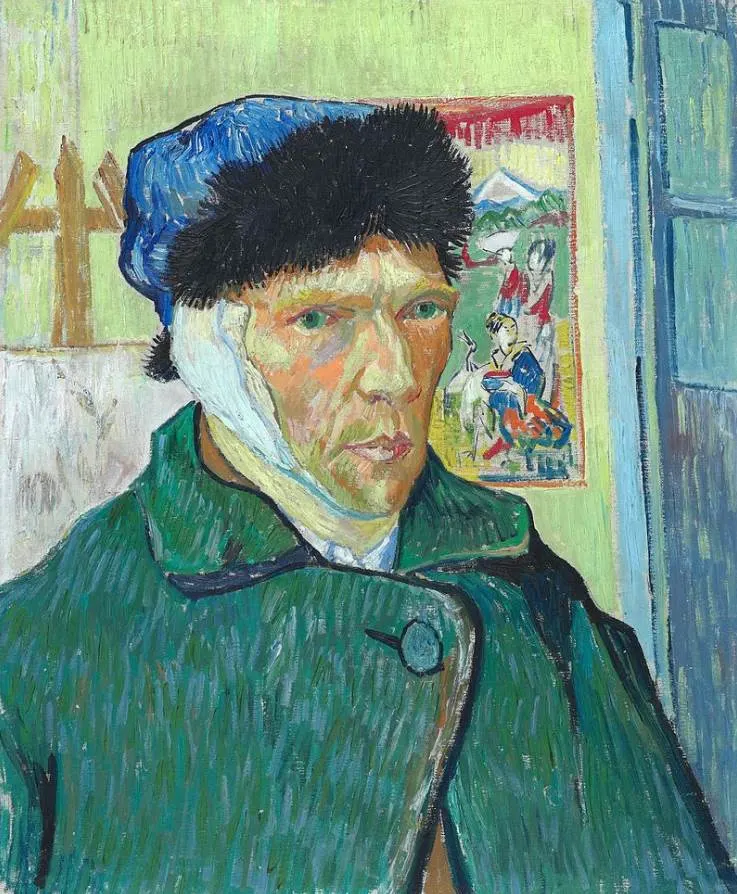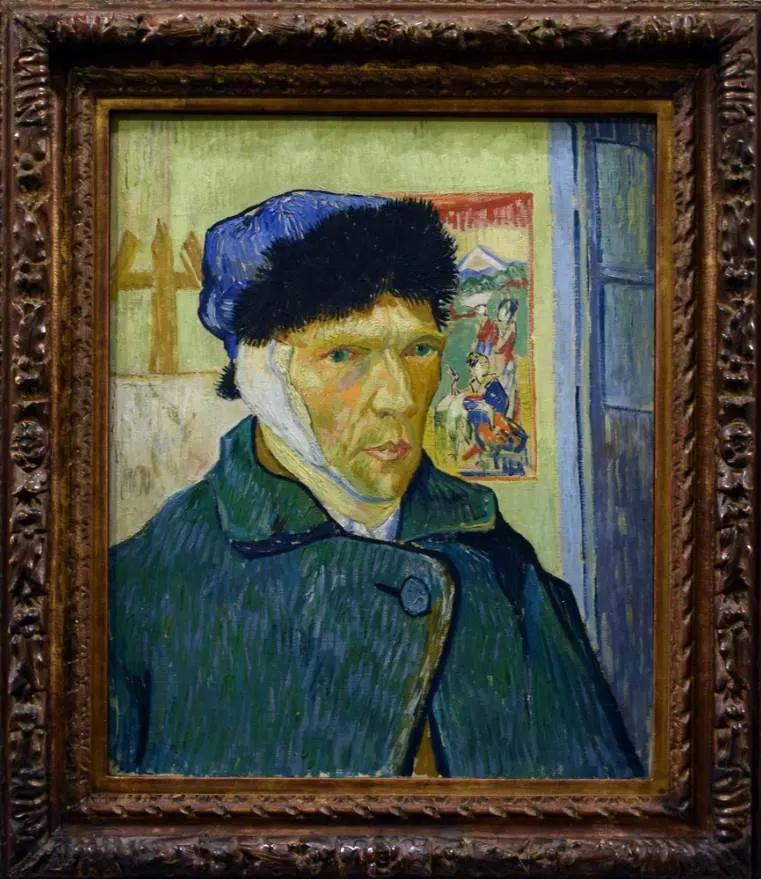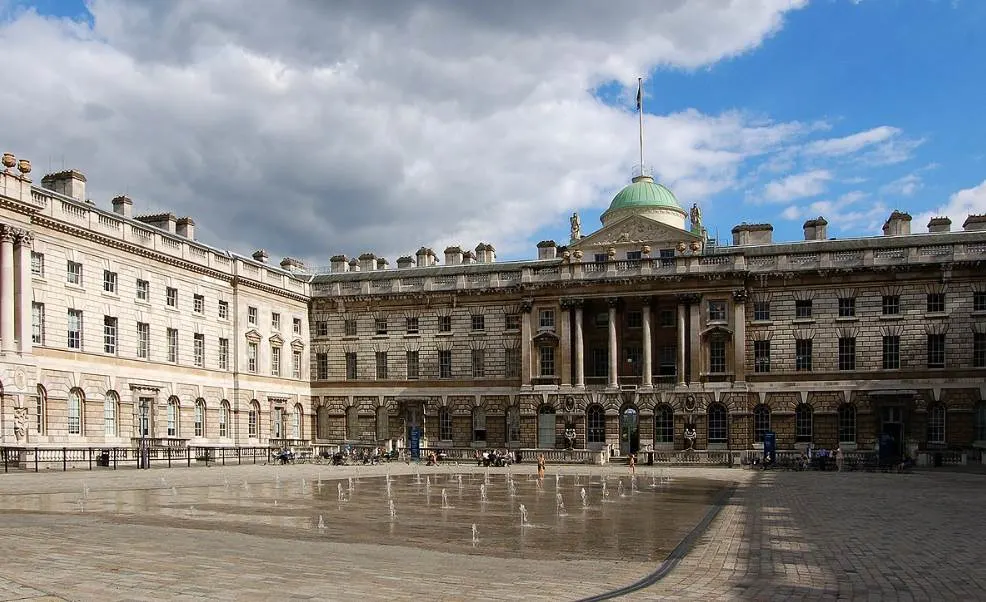Vincent van Gogh (1853-1890) painted over 35 self-portraits during a career that lasted approximately a decade.
One of these is fairly easy to date because of the particular attribute that the Dutch artist wears to cover his ear.
Let’s take a closer look at some of the most interesting facts about Self-Portrait with Bandaged ear by Vincent van Gogh, one of the most distinctive self-portraits in the artist’s oeuvre.
1. The painting was completed in January of the year 1889
Self-Portrait with Bandaged Ear is not the final self-portrait by Vincent van Gogh. It was produced in January of the year 1889 while he was living in Arles.
He completed several other portraits during his period in this small town in southern France, but not as many as during his earlier periods, especially in Paris.
Van Gogh didn’t paint himself so frequently because he was so obsessed with himself but rather for practical purposes. He didn’t have money but did want to enhance his skills in painting people.

2. He wore the bandage because of a self-inflicted wound
Some of his self-portraits depict signs of his mental condition and this particular work is the painting is the perfect example of it.
He was living at the Yellow House in Arles which he decorated with his paintings and where he installed his studio. He had moved here in 1888 after living with his brother Theo for a while.
It’s here that Paul Gauguin (1848-1903), his colleague Post-Impressionist artist, stayed as well.

Just like the trouble between him and Theo in Paris, the two quarreled frequently. Vincent wasn’t the easiest bloke to hang out with and this culminated in a psychotic incident in December of 1889 in which he cut off part of his left ear.
The bandage we can see in this painting was the result of this incident.

3. The bandage is actually on his left ear
Did I say left ear? In this painting it’s clear that the bandage is strapped around his right ear, right?
Vincent van Gogh painted his self-portraits with a mirror, which is why the right side of the painting is the left side of his face.
While the grimace on his face is often very similar, he did experiment with several angles and a lot of different types of attributes. In this painting, he wears a distinctive blue hat with black fur and a think green overcoat.

4. We can see a Japanese woodblock print in the background
Vincent had always been fascinated by Japanese art, especially Japanese ukiyo-e woodcuts. He purchased some blocks in 1888 while he was living in Antwerp.
This fascination never went away during the final years of his life and he sometimes integrated Japanese art into his paintings, including this one.
The artwork we can see in the background of Self-Portrait with Bandaged Ear has been identified as “Geishas in a Landscape,” a print that was created during the 1870s.
These prints decorated the walls of his studio, just like we see in this self-portrait.

5. The painting was once owned by a man who van Gogh painted thrice
One of the most fascinating facts about Self-Portrait with Bandaged Ear is that it was owned by a man named Julien Tanguy (1825-1894). He was a paint grinder in Paris who sold art supplies to local artists.
He was a lovable character and the subject of 3 of Vincent’s paintings that he completed in 1887. Two of the Portraits of “Père Tanguy” include the Japanese art that was decorating Vincent’s walls.
How he became the owner of this particular self-portrait of van Gogh remains a mystery.

6. It’s not the only self-portrait with a bandage that he painted
While in Arles, Vincent van Gogh painted 5 self-portraits in which he stares into a mirror and one painting in which we can see the artist walking on a street (this painting was probably destroyed during World War II).
Two of the 5 self-portraits depict the artist with a bandaged ear. The second version features a red background and depicts the fragile mental state of the artist at that time.
He wears the same clothes and also smokes a pipe. It’s therefore referred to as a “Self-portrait with bandaged ear and pipe.”
This painting is part of a private collection so it’s not on display in a museum.

7. How big is Self-Portrait with Bandaged Ear by Vincent van Gogh?
Vincent van Gogh was an extremely prolific painter who completed a painting just about every day of his career. He worked fast and painted on small to medium-sized canvases.
This painting is smaller than the majority of his works but similar in size to most of his self-portraits. After all, he was staring into a mirror while he produced these.
This oil on canvas painting has dimensions of 60 × 49 centimeters (24 × 19 inches).

8. Where is the painting located today?
Julien Tanguy, commonly referred to as “Père Tanguy” by the artist who bought supplies from him in the late 1880s, was an art supplier but also an art dealer.
The painting never left Paris in the following decades and was included in 2 Van Gogh retrospective exhibitions in 1901 and 1905.
It was purchased by English industrialist and art collector Samuel Courtauld (1876-1947) in 1928. He was the founder of The Courtauld Institute of Art in London in 1932 and he bequeathed his entire collection to this institution.
This means that you can admire Self-Portrait with Bandaged Ear by Vincent van Gogh at the Courtauld Gallery. This art gallery is housed in the Strand Building of Somerset House in London.

